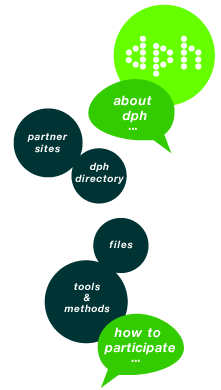For millions of people around the world, fishing and fishing traditions have been a way of life that has sustained them over centuries. But, like the fish stocks, which support them, fishing communities, are rapidly becoming an endangered species.
There is enough we can learn from our past about ecologically and socially sustainable fisheries management. There are many examples the world over of fisherfolk employing `nurture fisheries’ management strategies.
Such strategies involve using a range of selective, low-energy and passive techniques to take a seasonally diverse catch. They ensure an optimum use to produce current benefits, without jeopardising the potential for similar benefits in the future. They are geared towards safeguarding traditional livelihoods and local food security. The fishery is managed as a coastal commons through community institutions.
Examples of technologies used in nurture fisheries include hook-and-line and simple nets. Efficiency in nurture fisheries means ecological efficiency. Technology is used to optimally exploit the environment. The economic cost-benefit analysis includes the environmental costs of overexploitation and resource degradation.
On the other hand, `capture fisheries’ strategies view fishing as a hunting activity, where fish-stocks are open-access. Such a view leads to a free-for-all where responsibility for managing the resource is ill-defined.
Capture fisheries, therefore, tend to be capital- and energy-intensive as well as non-selective. While leading to short-term economic gains, they rapidly deplete the fishery. Examples of `catch-all’ techniques include trawling and `walls of death’ drift-nets.
In capture fisheries, efficiency means technical efficiency, that is, in terms of the amount of fish that can be caught per unit of effort. Economic efficiency means maximising returns to capital in the short term. This encourages intensive capital investment. It also externalises the environmental and social costs. If these costs had to be paid by the fishing companies, most modern fishing practices would be uneconomic.
>From a purely economic perspective, it makes much more sense to `clear cut’ the fishery, invest the profits elsewhere and move on. `Nurturing’ the resource only makes sense if your livelihood depends on it and you want to pass something on to your children.
Fisheries management needs to be put back into the hands of people who understand fisheries, and whose livelihoods depend on them- the fisher people themselves.
In many countries of the world, local knowledge and traditional livelihoods are beginning to receive the respect they deserve. Indeed, the Oceans Chapter of Agenda 21 makes `a commitment to take into account traditional knowledge and the interests of local small-scale fisheries and indigenous people’.
An analysis by the Food and Agriculture Organisation (FAO)concluded that in 1989 it cost the world US$92 million to earn US$ 70 million from fishing on the high seas. The real costs of fishing on the high seas are either subsidised or externalised on the crew and the environment.
Clearly, there is no simple prescriptive solutions to the gloomy prospects currently confronting us. But one avenue must be to try and build on the extensive knowledge and self-interest of fishing communities to manage coastal fisheries.
Increasingly, the concept and practice of `co-management’ is receiving international attention. Unrestricted privatisation by selling off chunks of the sea to commercial interests, is clearly not the answer.
The example of Canada and the collapse of the Newfoundland cod fishery is indicative of the kind of catastrophe this sort of privatisation could lead to. The Canadian offshore fleet, controlled by two large corporations, was allocated half the groundfish resource. This led to one of the world’s worst fishing disasters and has laid waste one of the most productive fisheries.
Clearly, therefore, if fisheries are to survive, it must be back to the future. There is no reason why this need mean becoming Luddites or restricting ourselves to using primitive technology and methods. It is merely a question of establishing priorities and developing strategies.
Key words
fishing, traditional knowledge, traditional fishing
,
Comments
There can be little doubt that there is today a crisis in world fisheries- a crisis brought about by the rapid industrialisation of the fishing fleet, and the use of non-selective, capital-intensive and over-efficient fishing technologies. The challenge today is to develop technologies, which are efficient from the environmental as well as economic and technical perspective, to develop economic tools, which can analyse social and environmental costs, and to develop management systems, which allocate property rights to specific community producer groups. The choices are simple and stark. We can `clear cut’ our fisheries, using the latest and technically most sophisticated, cost-efficient weapons in our armoury, leaving nothing for the future. Or we can turn from hunters into harvesters by learning from our past and developing ecologically efficient technologies.
Source
Articles and files
O'RIORDAN, Brian, Don't be hunters, start harvesting in. Samudra Report, 1994/12, 10 11

ICSF (International Collective in Support of Fishworkers) - 27 College Road, Chennai 600006, INDIA - Tel. (91) 44-2827 5303 - Fax (91) 44-2825 4457 - India - www.icsf.net - icsf (@) icsf.net



